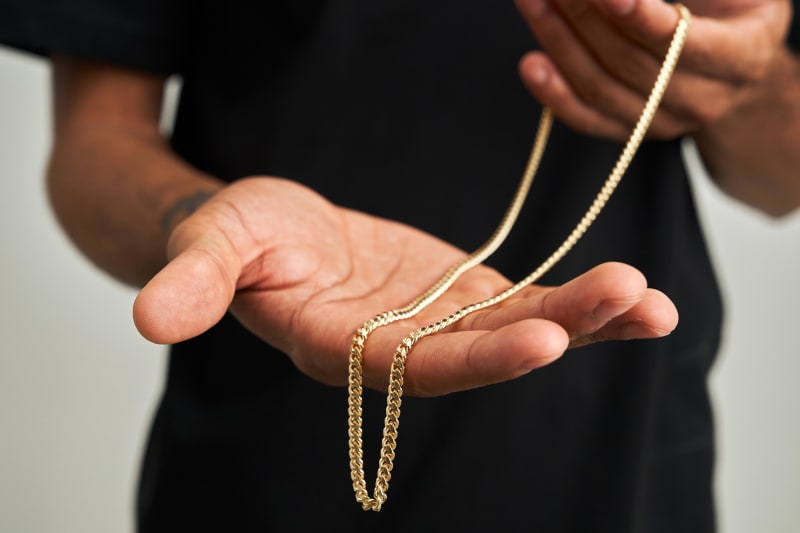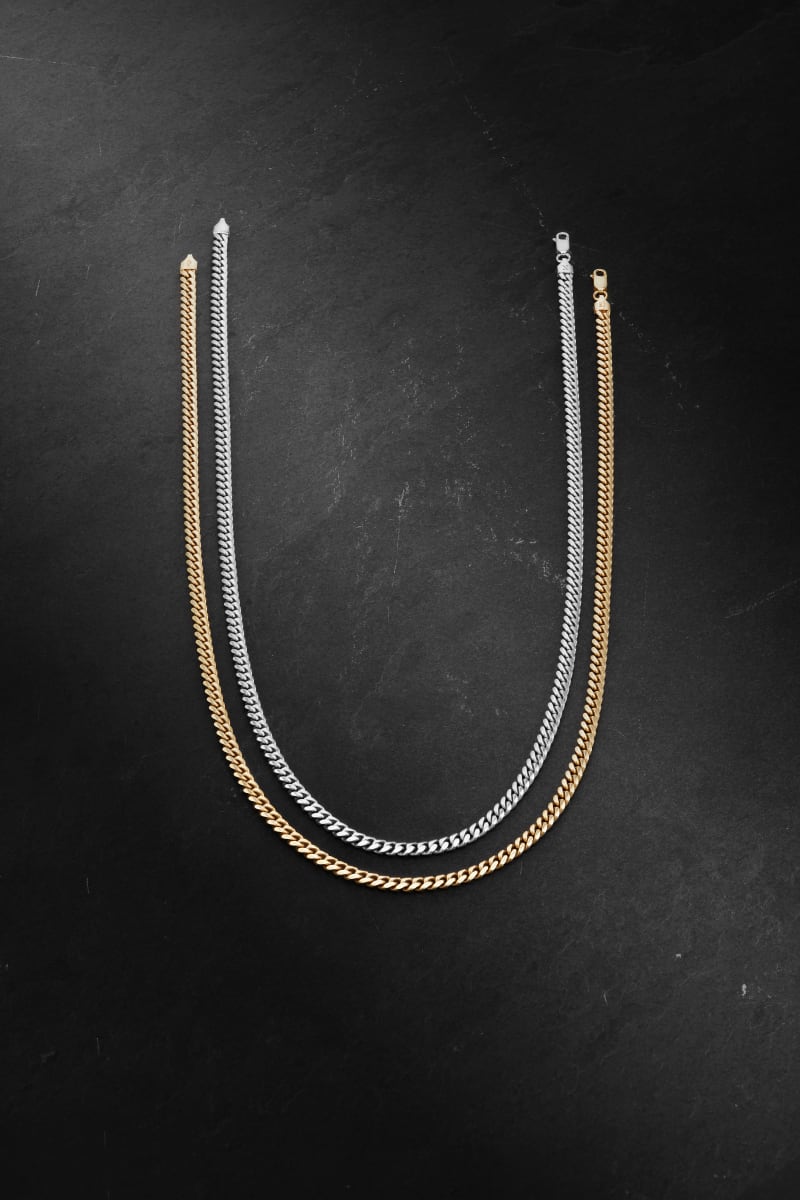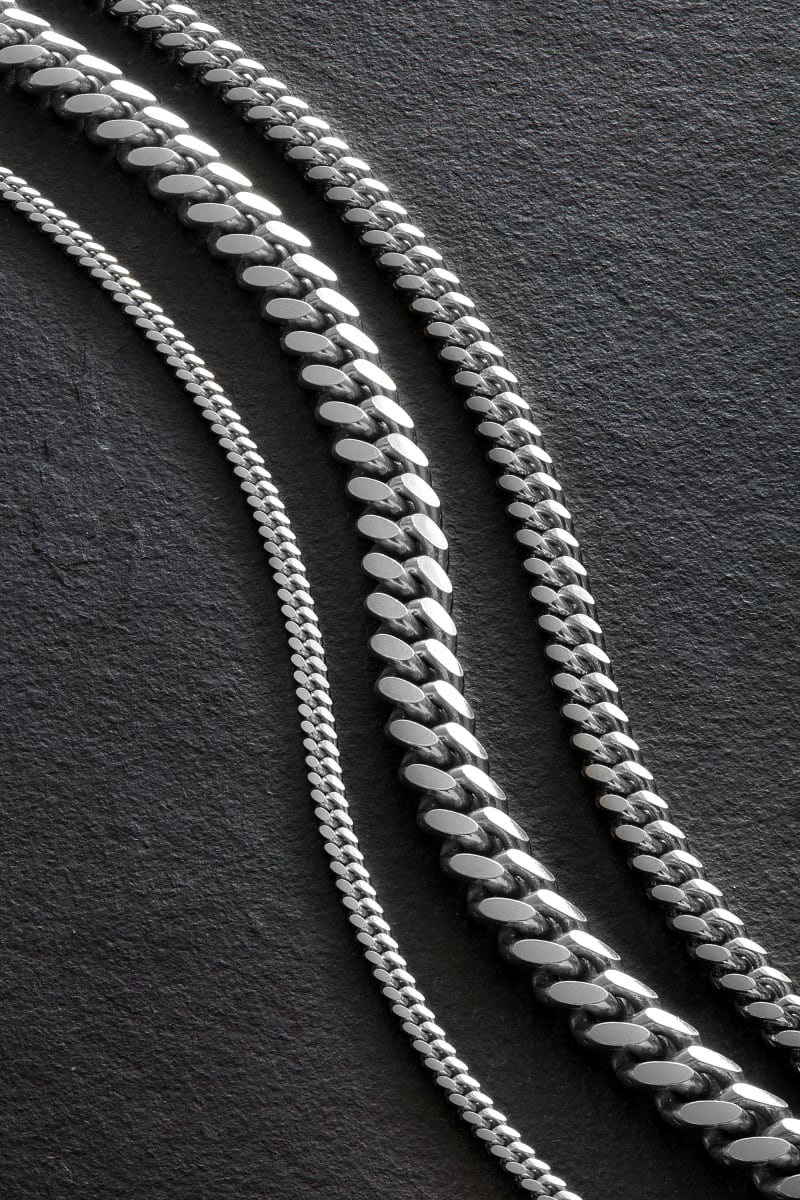We’ve talked about the differences between 10K and 14K gold and what caratage means. But you might be wondering,“what’s the difference between white gold and yellow gold?” There’s more involved than just the difference in color!
While yellow gold tends to be the more popular choice for solid gold jewelry, white gold is bright, cool, and a favorite choice for women’s engagement ring. With different colors of gold, including rose gold, you may want to know the difference between the colors of solid gold and how they’re made that way.
White Gold
White gold jewelry, whether 10k, 14k, or 18k white gold will be solid gold alloyed with other metals to attain the chosen caratage and color. The first thing to know is that there is no such thing as 24 karat white gold since the bright white color is made by mixing with alloys.
For example, a 14k white gold chain would be 14 parts real gold and 10 parts alloyed metals, like palladium or rhodium. To make it whiter, it might contain more palladium or rhodium and even be rhodium plated to give it additional brightness. Because of the additional alloys needed to create the white color, white gold is more durable than yellow gold.
Because of its cool hues, white gold jewelry tends to look better with diamonds or stones that are clear. A men’s wedding band with inset diamonds will give off a glittering shine that’s hard to look away from.
Yellow Gold
Yellow gold already has the yellow color ready to show off, so it won’t need additional alloys beyond what’s needed for the caratage to make it yellow. But, depending on how many karats it is, the color will differ!
24k gold tends to be a much yellower color. As gold goes down the caratage scale, the yellow will become softer. With thinner rings and chains, you might not notice the difference in color. But with bold men's bracelets and men's chains, you will notice a difference between 10k and 18k.
Worried about how to wear a gold chain or how to layer necklaces? Don’t be afraid to mix yellow and white gold pieces! There are no rules with how you pair your fine jewelry, and we love to mix it up, especially when there are some icy diamonds or CZ stones involved.
Rose Gold
Now that we’ve discussed white gold vs yellow gold, we should mention rose gold. Another warm-hued solid gold to add to your fine jewelry collection.
Colored gold has been a subject of experimentation for hundreds of years, but it wasn’t until the 21st century that colors like red, pink, and rosy hues came to the forefront as a desirable and marketable concept. Just as with yellow and white gold, rose gold is made up of solid gold and another metal alloy to achieve the proper color.
The reddish and rosy colors actually come from a generous portion of copper in the metal alloy mixture, a material that is far less present in yellow or white gold combinations. Don’t worry—there’s plenty of authentic, pure gold in the typical rose gold mixture, so you aren’t getting the short end of the stick.
With the inclusion of copper, sterling silver, and other durable alloys, rose gold is extremely tough and will last a lifetime if cared for properly. Rose gold and white gold jewelry are tough competitors against yellow gold—literally tough.
White Gold VS Yellow Gold: Our Final Verdict
So, what’s the final verdict? Well, to answer the original question of this article: white gold and yellow gold are different based on the alloys used to make the colors different. But we won’t end things there. There are pros to both gold colors, but not a lot of cons. Just personal preference and budget!
Remember that white gold will include higher percentages of palladium, rhodium, and sometimes sterling silver, which in turn make it more durable. You’ll want to keep it clean to maintain its shine, and over time, it may need some good buffing or refinishing if it has a lot of scratches.
The rhodium plating on white gold, like our 14k solid white gold jewelry, not only adds luster but also provides additional protection from scratches and dents from your active lifestyle. However, it can wear off over the years and may need to be redipped or refinished. Most jewelers will redip white gold jewelry for free, so it’s easy to keep it lustrous and strong as long as you remember to keep up with it.
In comparison, yellow gold might get more scratches that don’t show up as clearly but still need to be cleaned and polished. Yellow gold rings are also easier to resize because they are softer, so don’t stress if your fingers change in size.
Whether you choose white gold or yellow gold for your next item of jewelry, it's always good to have the help of an expert who can help you during the process of shopping and for the life of your piece! At JAXXON, we are here to help find you the perfect piece and keep it looking good.




